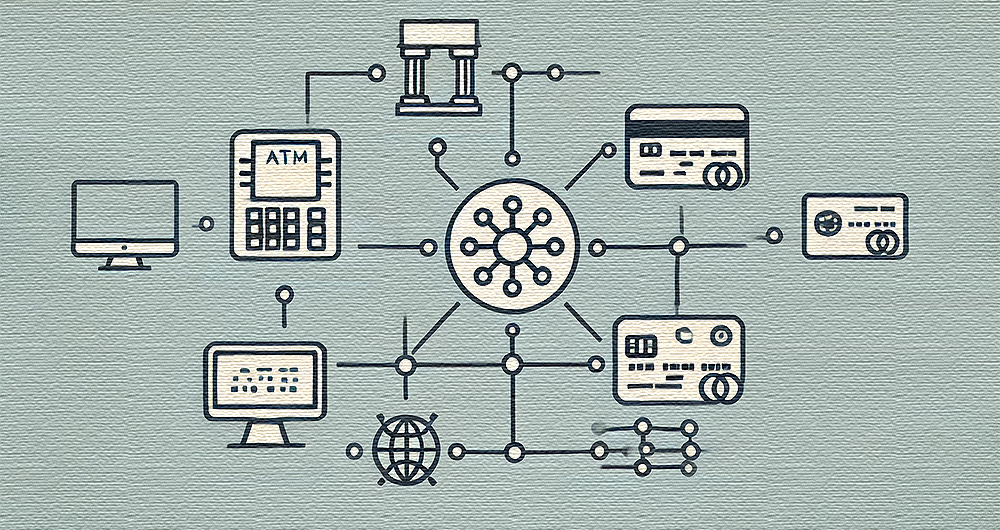
In banking, the ability to respond swiftly to customer actions and market fluctuations is crucial. Traditional systems often fall short due to their reliance on periodic updates and batch processing. This is where Event-Driven Architecture (EDA) comes into play.
EDA enables banks to react in real-time to various events such as customer transactions, security alerts, and market changes. By processing these events as they occur, banks can provide immediate, personalized responses. This not only improves customer satisfaction but also enhances operational efficiency, fraud detection, and regulatory compliance.
As banks seek to modernize and improve their services, adopting EDA becomes a strategic move to stay competitive and meet the ever-growing demands of the financial landscape.
Generic Approach to Event-Driven Architecture in Banking
Event-Driven Architecture (EDA) is a software design pattern where the flow of the program is determined by events such as user actions, sensor outputs, or messages from other programs or threads. Unlike traditional request-driven models, EDA emphasizes real-time response, flexibility, and scalability by processing events as they occur. This architecture is particularly effective in environments requiring immediate action and responsiveness, such as banking and finance.
Key Benefits of EDA
Real-time Processing
One of EDA’s primary advantages is its ability to process data in real-time. This means that the system reacts immediately as soon as an event occurs, providing up-to-date information and responses.
In banking, this capability is crucial for applications like fraud detection, transaction alerts, and dynamic customer interactions. Real-time processing ensures that customers receive timely updates and that banks can act swiftly on critical information.
Scalability
EDA systems are inherently scalable. They can handle increasing volumes of data and events without significant changes to the architecture. This scalability is achieved through decoupling event producers and consumers, allowing for the independent scaling of each component.
For banks, this means that as transaction volumes grow, the system can easily scale to meet demand without sacrificing performance.
Flexibility
EDA supports a modular approach to system design. Decoupling event producers from event consumers allows for greater flexibility in adding, removing, or updating components without disrupting the entire system. This flexibility is critical for banks to adapt to new regulatory requirements quickly, integrate new technologies, and innovate with new services.
Cost Efficiency
By optimizing resource usage and enabling automated responses to events, EDA can lead to significant cost savings. Banks can reduce the need for manual processing, lower operational costs, and improve resource allocation. Additionally, the ability to scale resources up or down based on demand helps avoid unnecessary expenditures.
Real-World Example: Apache Kafka
One prominent technology enabling EDA is Apache Kafka, a distributed event streaming platform capable of handling trillions of events a day. Many financial institutions use Kafka to build real-time data pipelines and streaming applications. It allows banks to ingest, store, process, and analyze data in real-time, providing a solid foundation for implementing EDA.
For instance, Capital One uses Kafka to power its real-time data infrastructure, supporting various use cases from fraud detection to customer personalization. By leveraging Kafka, Capital One can process and analyze massive data streams in real-time, providing a responsive and dynamic banking experience for its customers.
Application of EDA in Banking
Event-Driven Architecture (EDA) revolutionizes how banks operate by enabling real-time responsiveness and agility. Here’s how EDA enhances various aspects of banking, from customer experience to security and operational efficiency.
Enhancing Customer Experience
Event-Driven Architecture (EDA) allows banks to deliver highly personalized and timely services.
- For example, when a customer makes a transaction, the system can immediately send a notification or offer personalized advice. By processing customer data in real-time, banks can tailor their services to individual needs and preferences, significantly improving customer satisfaction and loyalty.
According to a McKinsey study, companies that excel at personalization generate 40% more revenue from those activities than average players. Personalization drives performance and better customer outcomes, helping businesses build stronger relationships with their customers and enhance their overall experience.
Fraud Detection and Security
According to a report by the Association of Certified Fraud Examiners, organizations lose an estimated 5% of their revenue to fraud each year. EDA enhances security by enabling real-time monitoring and response to suspicious activities. Events such as unusual login attempts, large withdrawals, or transactions from unfamiliar locations can trigger immediate alerts and actions, helping to prevent fraud and protect customer accounts.
Regulatory Compliance
Banks must comply with numerous regulations that demand timely reporting and monitoring of transactions. EDA ensures that all relevant events are tracked and reported in real-time, facilitating compliance with regulations such as the Payment Card Industry Data Security Standard (PCI DSS) and the General Data Protection Regulation (GDPR).
Operational Efficiency
EDA automates many routine tasks and enables systems to react immediately to events, significantly boosting operational efficiency.
- For instance, EDA can automate the process of sending transaction alerts, updating account balances, and managing customer inquiries, reducing the need for manual intervention and speeding up service delivery.
This increased efficiency allows banks to serve their customers better and allocate resources more effectively.
Latinia’s Event-Driven Architecture
Latinia leverages Event-Driven Architecture (EDA) through its advanced solutions designed to respond to real-time events, ensuring that banks can deliver immediate, relevant, and secure communications to their customers.
Key components of Latinia’s offerings that exemplify this approach include the Real-Time Decision Engine and the Next Best Action (NBA) solutions.
Real-Time Decision Engine
Latinia’s Real-Time Decision Engine processes real-time data to make immediate decisions that enhance customer experience. This engine allows banks to respond instantly to customer actions and market changes by analyzing transactional events as they happen.
Key Features:
- Immediate Data Processing: The engine can analyze and act on transactional data in real-time, ensuring that banks can provide timely responses and services.
- Context-Aware Decisions: By combining real-time data with historical customer data, the engine makes context-sensitive decisions that are highly relevant to each customer.
Next Best Action (NBA) Solutions
Built upon the Real-Time Decision Engine, Latinia’s NBA solutions leverage real-time transactional events to provide relevant, personalized experiences for banking customers. These solutions use advanced business rules and customer intelligence data to deliver context-sensitive recommendations and services at the right moment.
Key Features:
- Personalized Customer Interactions: The NBA solutions combine transaction information with customer intelligence to offer personalized assistance, product recommendations, and proactive solutions to potential issues.
- Advanced Business Rules: They apply sophisticated business rules to determine the best action to take for each customer interaction, enhancing customer satisfaction and loyalty.
- Proactive Engagement: By anticipating customer needs and behaviors, the NBA solutions enable banks to engage with customers proactively, creating “wow” moments and fostering loyalty.
Conclusion
The future of banking is increasingly real-time and customer-centric. Event-Driven Architecture plays a crucial role in this transformation, enabling banks to respond immediately to customer actions and market changes.
Latinia’s EDA-based solutions, including the Real-Time Decision Engine and NBA solutions, exemplify how banks can leverage this architecture to enhance customer experience, improve operational efficiency, and adapt swiftly to new opportunities and challenges.
Ready to transform your banking operations with real-time responsiveness and agility? Discover how Latinia’s solutions can help you stay ahead in a fast-evolving financial landscape. Contact us today to learn more and schedule a demo of our Real-Time Decision Engine and NBA solutions.
Empower your bank to deliver unparalleled customer experiences and achieve operational excellence with Latinia.
Categories: Strategy

